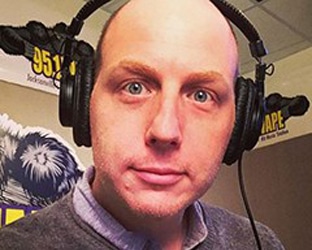RBR + TVBR INSIGHT
According to eMarketer, popular video-and-photo-based social media app Snapchat is poised to see double-digit percentage growth in its U.S. user rolls in 2016 and in 2017.
This growth is based on the app’s spread in popularity beyond millennials and teens to a wider range of social media users.
With a “storytelling platform” that is gaining advertiser interest, Snapchat is feverishly seeking ways to monetize its platform, while setting itself apart from “old-guard” social media platforms such as Twitter, which received a Sell rating from MoffettNathanson senior analyst Michael Nathanson in late May due to both user fatigue and advertiser fatigue.

With the July introduction by Snapchat of its “Memories” Snap-saving and Story-saving tool, the Venice, Calif.-based tech company may finally be on its way to high profitability.
Radio can play a big part in this growth, with radio broadcast companies benefiting from increased revenue and stronger ratings, argues Mark Kaye, a Snapchat host and wake-up air personality on Cox Media Group’s CHR/Pop WAPE-FM 95.1 in Jacksonville, Fla.
According to eMarketer, some 58.6 million people in the U.S. will use Snapchat at least once per month in 2016.
This represents 28.3% of all domestic smartphone users, and 18.1% of the entire U.S. population.
By comparison, Snapchat was used regularly by just 10.3% of U.S. consumers and less than 20% of all U.S. smartphone users in 2014.
What radio companies should take note of is where Snapchat’s user base is expected to be in 2018: A 27.2% year-over-year increase is expected for this year, followed by a 13.6% increase next year.
“Millennials will remain in the majority going forward, but their share of the total Snapchat audience will shrink each year as the app’s appeal increases among other generations,” eMarketer predicts, adding, “Millennials will make up 56% of all U.S. Snapchat users by the end of 2020.”
Today, 7 in 10 active Snapchat users are millennials.
Hand Control Over To Your Air Talent
Does all of this Snapchat chatter seem confusing?
Don’t know how to implement and integrate its use at your radio station?
Have your air talent handle it, working in concert with the GSM, marketing team and the GM.
“Your radio talent is your most highly trained Snapchat talent,” Kaye says. “They are already trained to create great Snapchat content.”
That’s because veteran air personalities such as Kaye have been trained to be informative, and entertaining, in 10 seconds—just like Snapchat.
“We’ve been doing this for decades,” Kaye says. “We are well ahead of the game.”
Radio is also like Snapchat in that once something is said, it disappears almost immediately, mirroring the swift removal of photos on Snapchat after they’ve been viewed.
Meanwhile, formats such as CHR/Pop, CHR/Rhythmic and Country are already in tune to what Snapchat provides for them. Thus, they’ll quickly become content drivers because of one key advantage Snapchat has over its competitors: Interactivity.
“Radio is the only medium that interacts with is audience on a daily basis,” Kaye says. “You don’t see television programs taking calls and interacting with its audience. And, unlike Twitter, Instagram or Facebook, with Snapchat people watch whatever Snap they choose. Could it be from a client? Could it be from your air talent? They choose it. That’s why advertising on Snapchat is so attractive.”
For radio’s sales management, Kaye argues that there’s no better digital platform out there than Native Advertising within the Snapchat platform.
How to do it is the key.
“People are successful on Snapchat. Brands are not,” Kaye says.
The Solution To Rambling Phone Calls
At WAPE, Kaye asks his listeners to Snap a video of them listening to his show and to share it.
“It’s a great way to do market research,” he says half-jokingly.
Indeed, Snapchat users who tune to WAPE’s Big Ape Morning Mess can show station management where they are when they’re listening. Kaye adds that listeners can also share where they are when Kaye has left for the day, continuing the interaction with a station’s air talent.
“Snapchat is just an awesome way to create content for your product,” Kaye says.
The product could be your morning show, or a new afternoon talk host at a Sports station.
With Snapchat, radio’s C-Suite executives should again understand that it is the ultimate conversational tool, and not for “broadcasting.”
Kaye explains, “There’s been so much focus on telling the audience something over social media, and that’s not what these platforms were intended for. Now, audio, video and photos can get sent from the audience to the show. It’s a content creation medium, built on conversation.”
Kaye first joined the Snapchat community some 2 ½ years ago. About six months in to using Snapchat, he figured out how to repurpose a two-hour Sunday evening conservative political talk show he also hosts, on a sister Cox Media Group News/Talk WOKV-AM.
The talk show was gaining little traction in the 7pm-9pm slot, opposite Sunday Night Football.
Then, it started generating buzz through Snapchat.
Learning how to master the app, Kaye then integrated Snapchat into WAPE’s Big Ape Morning Mess.
Today, bits such as “Snapchat karaoke” have replaced “rambling phone calls” from first-timers.
“Snapchat is the way millennials are communicating,” Kaye says. “The question I pose to radio executives is who your No. 1 personality is going to be on Snapchat. Integrate this person into an existing Snapchat story, then discretely add in your messaging.”
Stations that follow Kaye’s words could be poised to ride the wave that’s predicted in user growth over the next two years.
RBR + TVBR




